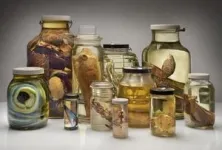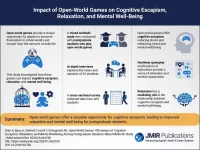Small habitats, big consequences: Connectivity loss in pond networks threatens microbial biodiversity
2024-12-18
(Press-News.org)
In the midst of the ongoing global biodiversity crisis, even the smallest habitats like ponds demand our attention. Fragmentation of these habitats—driven by human activities like urbanization, agriculture, and land-use changes—poses a significant threat to biodiversity. Often overlooked in conservation efforts, ponds serve as vital ecological hotspots, supporting diverse species and sustaining essential ecosystem processes. These waterbodies are home to various microbial communities that, despite their tiny size play an indispensable role in ecosystem functioning, acting as primary producers, decomposers, and links in food webs. While the impacts of habitat fragmentation on large organisms like mammals and birds are well-documented, the effects on microscopic organisms, including bacteria, algae, and other unicellular eukaryotes remain poorly understood.
A recent study carried out by researchers from HUN-REN Centre for Ecological Research in Hungary explored the effects of connectivity loss within pond networks. Using an outdoor experimental setup of artificial ponds (mesocosms), the researchers simulated fragmentation by terminating the movement of water and organisms between habitats in half of the pond networks while maintaining dispersal in the other half. By controlling for factors like habitat size and environmental conditions, and focusing solely on connectivity loss, the study provided an insight into the direct impacts of fragmentation on biodiversity.
“Our findings were particularly striking for unicellular microeukaryotes. Connectivity loss led to significant declines in their diversity at both local and regional levels, highlighting that fragmentation can directly drive biodiversity loss, even under controlled circumstances. Both rare and abundant species were impacted, suggesting that fragmentation represents a widespread and severe threat to microbial biodiversity. In contrast, prokaryotes appeared more resilient, though we observed signs of a potential “extinction debt,” where biodiversity loss may emerge over longer timescales.” – explains Dr. Beáta Szabó, the first author of the study.
Beyond biodiversity, the study also highlighted how connectivity loss disrupts trophic interactions. Zooplankton grazers, which interact closely with microbial communities, experienced reduced biomass in fragmented habitats, further exacerbating the decline in diversity and community evenness of microeukaryotes. These findings highlight the interdependence of organism groups within ecosystems and the cascading impacts that habitat fragmentation can have on biodiversity and ecosystem functioning.
“Our study clearly demonstrates that habitat fragmentation—specifically the loss of connectivity—can have serious and far-reaching consequences for biodiversity. Even when habitat size or environmental conditions remain constant, simply disrupting the dispersal of individuals between habitats can trigger significant declines in microbial diversity. Conservation efforts must not only focus on preventing habitat destruction, particularly in vulnerable ecosystems like pond networks, but also prioritize maintaining and restoring connectivity between habitats to protect the ecosystems and species that rely on them. This is especially crucial for microbes, which, despite their small size, have enormous ecological significance." – summarizes Dr Zsófia Horváth, the senior author of the study and head of the Biodiversity and Metacommunity Ecology Research Group at Institute of Aquatic Ecology, HUN-REN Centre for Ecological Research.
END
ELSE PRESS RELEASES FROM THIS DATE:
2024-12-18
(Toronto, December 18, 2024) A study published in the Journal of Medical Internet Research has found that open-world video games can significantly improve relaxation and mental well-being among postgraduate students. Open-world games, known for their expansive environments and player autonomy, offer a form of cognitive escapism that helps players disconnect from daily stressors and enhance their mood.
The study, a collaboration between researchers from Imperial College London, United Kingdom, and the University of Graz, Austria, used a mixed methods approach: they combined survey data from 609 players and in-depth interviews of 32 players. Popular titles like The ...
2024-12-18
A study of more than 26,000 white dwarf stars has confirmed a long-predicted but elusive effect in these ultra-dense, dying stars: Hotter white dwarfs are slightly puffier than cooler ones, even when they have the same mass.
The findings bring scientists one step closer to using these stellar objects as natural laboratories to probe the effects of extreme gravity and hunt for exotic dark matter particles. Details about the research, led by Johns Hopkins University, are published in The Astrophysical Journal.
“White dwarfs are one of the best characterized stars that we can work with ...
2024-12-18
There are over three billion specimens and cultural objects housed in natural history collections around the world—things like fossils, dried plants, and pinned insects. Close to forty million of them are at the Field Museum in Chicago, mostly behind the scenes in a vast library documenting life on Earth. These collections are used by scientists at the museum and around the world to explore what lived where and when and how living things have changed over time.
However, much of the information about these collections is hard to access, ...
2024-12-18
Patients will be better able to benefit from innovations in medical artificial intelligence (AI) if a new set of internationally-agreed recommendations are followed.
A new set of recommendations published in The Lancet Digital Health and NEJM AI aims to help improve the way datasets are used to build Artificial intelligence (AI) health technologies and reduce the risk of potential AI bias.
Innovative medical AI technologies may improve diagnosis and treatment for patients, however some studies have shown that medical AI can be biased, meaning that it works well for some people and not for others. This means some individuals and communities may be ‘left ...
2024-12-18
The Davos Alzheimer’s Collaborative (DAC), a pioneering worldwide initiative seeking to cure Alzheimer’s disease and improve brain health, today announced they will work with Janssen Research & Development, LLC, a Johnson & Johnson company, and Beckman Coulter Diagnostics, two leading pharmaceutical and diagnostics companies, to advance the assay validation of blood-based biomarkers (BBMs) for Alzheimer’s disease for global use in diverse populations.
DAC, via its Global Cohorts Program, has enabled ...
2024-12-18
Dr. Jwa Eunjin and her research team at the Korea Institute of Energy Research (KIER) have achieved a significant breakthrough in clean energy technology. The team has successfully enhanced a crucial component of a bio-electrochemical cell, enabling more efficient hydrogen production from microorganisms found in waste. This advancement resolves longstanding power loss challenges in conventional processes, offering a transformative pathway toward large-scale, cost-effective hydrogen production.
Biogas, a renewable ...
2024-12-18
Asians, non-Hispanic Blacks and Hispanics were significantly less likely than whites to use obesity-management medications to lower their weight compared with whites, new research suggests. The differences could not be fully explained by income or education level, health insurance coverage or clinical need.
The study, published in the peer-reviewed Journal of Racial and Ethnic Health Disparities, is one of the few to compare the use of obesity-management medications across racial and ethnic groups, and the first to consider ...
2024-12-18
A review of 3,000 studies also suggests these minute plastic air particles may be causing male and female infertility.
Tires and degrading garbage shed tiny pieces of plastic into the air, creating a form of air pollution that UC San Francisco researchers suspect may be causing respiratory and other illnesses.
A review of some 3,000 studies implicates these particles in a variety of serious health problems. These include male and female infertility, colon cancer and poor lung function. The particles also may contribute to chronic pulmonary inflammation, ...
2024-12-18
Smartwatches and fitness trackers have become ubiquitous forms of wearable tech, accompanying many people throughout their days (and nights). But they may expose the skin to so-called forever chemicals in the process. More expensive wristbands made from fluorinated synthetic rubber revealed particularly high amounts of one forever chemical, perfluorohexanoic acid (PFHxA), according to a study published in ACS’ Environmental Science & Technology Letters.
“This discovery stands out because of the very high concentrations of one type of forever chemical found in items that are in prolonged contact with ...
2024-12-18
To guard against harmful waterborne pathogens, many consumers, including managers of health-care facilities, install antimicrobial silver-containing showerheads. But in ACS ES&T Water, researchers now report that these fixtures are no “silver bullet.” In real-world showering conditions, most microbes aren’t exposed to the silver long enough to be killed. However, the composition of rare microbes in water from these showerheads varied with each type of fixture tested.
The stream of droplets and fine mist that form during a shower could be inhaled or swallowed. Installing showerheads ...
LAST 30 PRESS RELEASES:
[Press-News.org] Small habitats, big consequences: Connectivity loss in pond networks threatens microbial biodiversity







